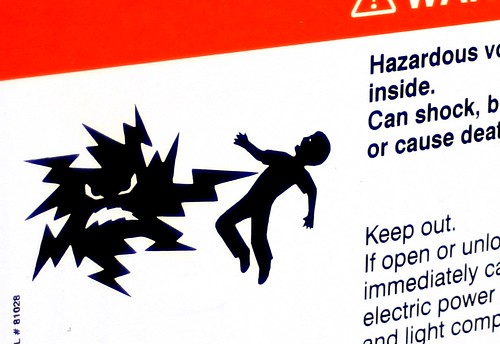In the last few years, and particularly with the advent of the #MeToo movement, some employers may have seen a rise in the number of harassment complaints in the workplace, including sexual harassment complaints. Employers under federal jurisdiction have been affected as well.
However, the current legal framework surrounding harassment and violence in federally regulated workplaces is fragmented. The results of many public consultations have shown that this framework is not currently designed to adequately address occurrences of sexual harassment and sexual violence.
In that context, in the past 18 months, significant changes have been proposed to the current legislation to address workplace harassment situations.
Audit, Compliance and Risk Blog
Canada—Federal Employers: Prepare for a Wave of Change in Workplace Harassment Obligations
Posted by Maryse Tremblay on Tue, Jul 30, 2019
Tags: Business & Legal, Employer Best Practices, Health & Safety, Employee Rights, Workplace violence, Canadian
Among its many workplace health and safety standards, the Occupational Safety and Health Administration (OSHA) requires employers to protect employees during equipment servicing and maintenance, to prevent “unexpected” equipment energization, start up, or release of stored energy. OSHA’s Control of Hazardous Energy Standard—more often called the Lockout/Tagout or “LOTO” Standard after its primary compliance requirements—requires employers to establish and implement safety procedures to control such hazardous energy. The LOTO Standard has changed very little since OSHA adopted it in 1989, but the agency has just published a formal request for information – public comments – about two changes in workplace equipment over the past 30 years that might affect energy hazards and justify revisions to the LOTO Standard. The rest of this note summarizes existing requirements and discussed OSHA’s review of control circuits and workplace robotics.
Read MoreTags: Business & Legal, Employer Best Practices, Health & Safety, OSHA, Employee Rights, Hazcom
Occupational Safety and Health Review Commission Confirms Employer’s General Duty Clause Applies to Workplace Violence
Posted by Jon Elliott on Tue, May 14, 2019
On March 4, 2019, the U.S. Occupational Safety and Health Review Commission (Commission) issued its first affirmation of a citation and penalty issued by the Occupational Safety and Health Administration (OSHA) to punish a health care provider under the Employer’s General Duty Clause for failing to take adequate steps to prevent workplace violence. OSHA has issued citations under this Clause since 2012, but this is the first time that the Commission has confirmed one of these citations on appeal.
Read MoreTags: Business & Legal, Employer Best Practices, Health & Safety, OSHA, Employee Rights, Workplace violence
Even if the latest polar vortex has ended by the time you read this, employers in most parts of the continent should be worrying about protecting workers against winter weather. Occupational safety and health regulators include “environmental” hazards as those that may require employers to provide their employees with personal protective equipment (PPE), and employers also bear a “general duty” to protect workers against recognized hazards. These requirements cover potential harm from extreme temperatures including cold, as well as slippery surfaces and other hazards from frozen and melting snow or other precipitation.
Read MoreTags: Employer Best Practices, Health & Safety, OSHA, Employee Rights, climate change
Directors' Liability for Workplace Sexual Harassment in Canada Can Depend on Which Laws are Applied
Posted by Jon Elliott on Tue, Jan 22, 2019
Tags: Business & Legal, Employer Best Practices, Employee Rights, Workplace violence, Canadian, directors, directors & officers
When someone receives occupational direction and/or compensation from more than one entity, who’s the boss? Sometimes it’s obviously one or the other, sometimes it’s not clear which one is, and sometimes the answer may be “both.” The answer has important implications, not just for who writes a paycheck but for who is subject to legal requirements and prohibitions under applicable laws.
Read MoreTags: Business & Legal, Employer Best Practices, Employee Rights, NLRB, directors & officers
The Canada Labour Code and provincial employment standards acts generally specify a minimum notice period before such terminations (the “statutory notice period”), and generally allow the employer to pay compensation to the employee instead of giving the employee notice. (e.g., CLC ss. 54-67) This compensation is usually called “severance pay”; it replaces advance notice of termination. In general, the severance pay must equal the salary and benefits that the employee would have earned if permitted to work until the end of the notice period. Courts interpret and defend these prohibitions against “contracting out” termination benefits.
Read MoreTags: Business & Legal, Employer Best Practices, Employee Rights, Canadian, directors, directors & officers
The Occupational Safety and Health Administration (OSHA) and state worker protection agencies require employers to “guard” moving portions of machines and powered equipment, to prevent entanglements, pinches and amputations. OSHA sets general requirements for machine guarding under its Machine Guarding Standard, plus specific requirements for six different types of equipment in separate standards.
Read MoreTags: Employer Best Practices, Health & Safety, OSHA, Employee Rights
Tackling the Gender Pay Gap: Ontario’s Pay Transparency Act, 2018
Posted by Maria Gergin on Tue, Oct 30, 2018
On April 26, 2018, the Ontario government passed the Pay Transparency Act, 2018 (the Act), which created a number of requirements for employers with respect to compensation reporting and disclosure to employees and potential employees, as well as compliance compensation reporting to the government, which the government will then make public.
Read MoreTags: Business & Legal, Employer Best Practices, Employee Rights, Canadian, directors, directors & officers
Organizations with facilities that may be subject to routine water infiltration or leaks, or sudden flooding from hurricanes or other events – should consider both sets of information.
Mold Basics
Molds and other fungi are both ubiquitous and plentiful--they have been estimated to make up a quarter of all the biomass on the planet. Molds are found almost everywhere, and can grow on just about any surface, as long as moisture and oxygen are available.
Read MoreTags: Employer Best Practices, Health & Safety, Employee Rights, Environmental risks, Environmental, mold










